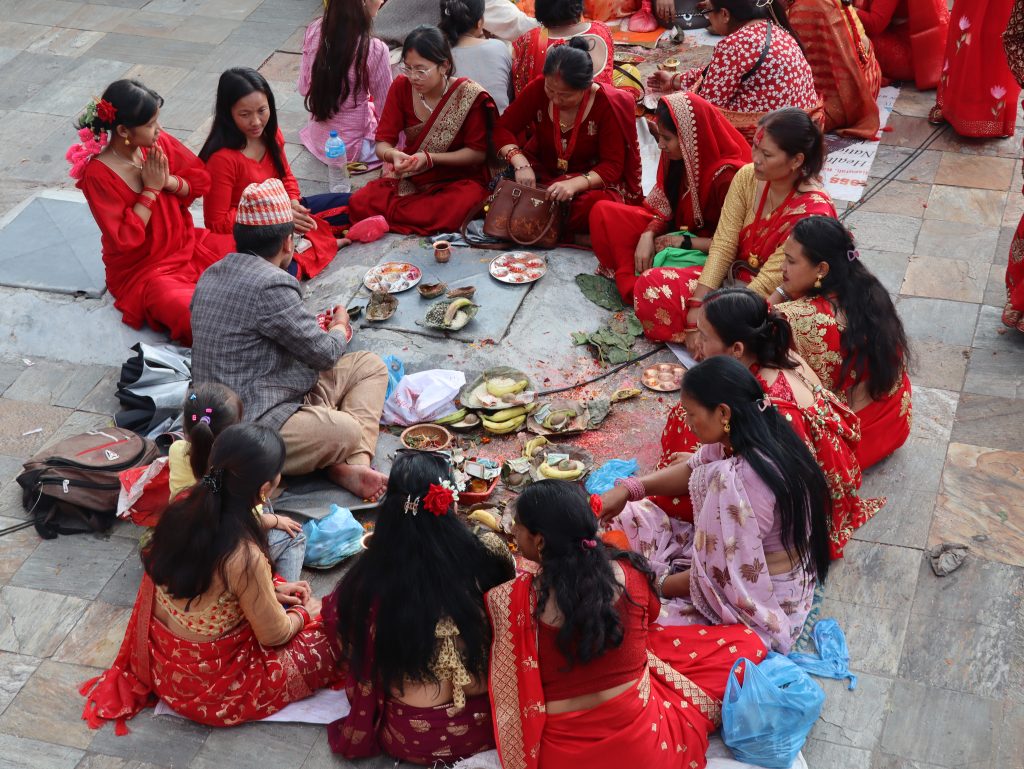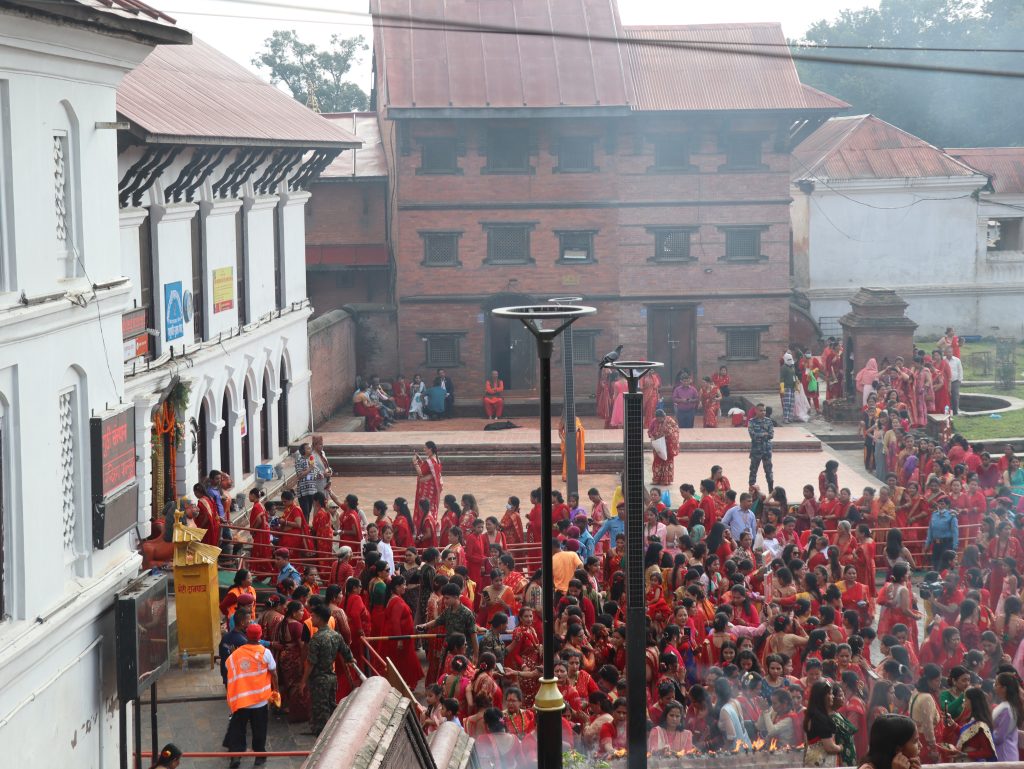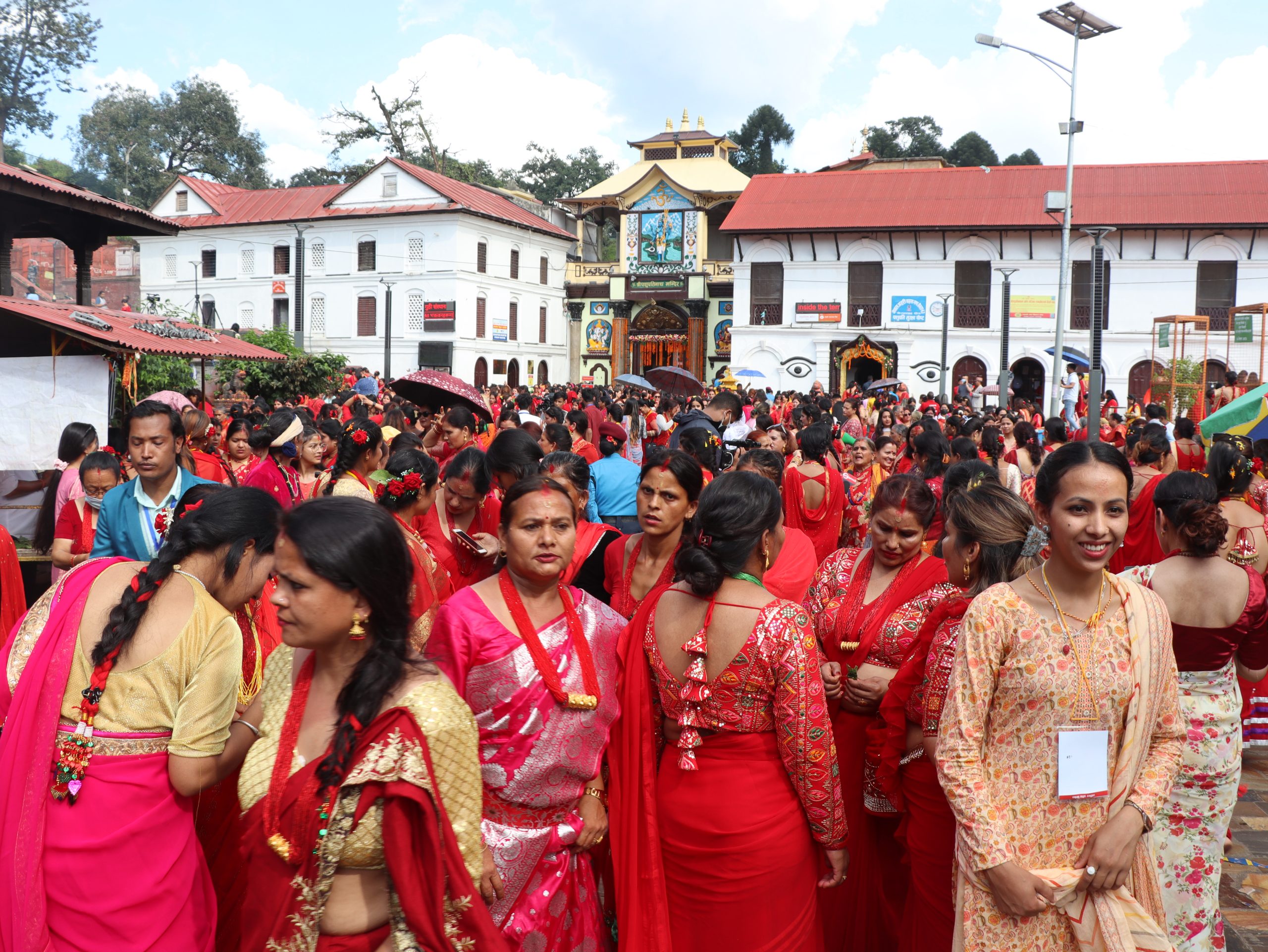Cultural Immersion: Teej Festival at Pashupatinath Temple
Teej is one of the most vibrant and spiritually significant festivals celebrated by Hindu women, especially in Nepal and parts of India (Rajasthan, Uttar Pradesh, and Bihar). It is usually observed in the month of Shrawan (July–August) during the monsoon season, and is deeply associated with Goddess Parvati and her union with Lord Shiva.

As part of our cultural and spiritual exploration, Kantipur Yoga Academy organized a special visit to the sacred Pashupatinath Temple during the vibrant Teej Festival. Our international students witnessed the powerful devotion of Nepali women, clad in red, singing and dancing in celebration of love, prayer, and purification.
This experience offered deep insights into the rich spiritual heritage of Nepal and the living traditions that inspire resilience, discipline, and joy. By participating respectfully and learning the stories behind the rituals, students connected not only with Nepalese culture, but also with the essence of feminine strength and devotion embedded in the Teej tradition.

🌸 Why Women Celebrate Teej Festival
Teej is celebrated primarily by married and unmarried women:
- Married Women: To pray for the well-being, health, and long life of their husbands, and for a blissful married life.
- Unmarried Women: To seek an ideal life partner like Lord Shiva through devotion and fasting.
📖 The Story Behind Teej Festival
According to Hindu mythology, Goddess Parvati underwent severe penance and devoted herself completely to Lord Shiva for 108 lifetimes before he accepted her as his consort. Her unwavering devotion, patience, and inner strength led to the divine union. This story symbolizes faith, spiritual dedication, and feminine power.
Teej commemorates this sacred love and the divine feminine energy, inspiring women to walk the path of devotion (bhakti), purity, and inner strength.
🙏 Spiritual and Cultural Practices
- Fasting (Brata): Many women observe a strict fast, some even without water (nirjala), as an act of devotion and self-discipline.
- Puja and Rituals: Special pujas are performed to Lord Shiva and Goddess Parvati for blessings.
- Dancing and Singing: Women gather in red attire to sing Teej geet (folk devotional songs), share stories, and perform traditional dances.
- Dar Khane Din: The day before the fast, women enjoy feasts, sweets, and community gatherings.
🌼 Benefits of Celebrating Teej Festival
✅ For Married Women:
- Enhances emotional bonding and respect in marriage.
- Symbolizes loyalty, love, and spiritual partnership.
- Fosters community support and shared cultural identity.
✅ For Unmarried Women:
- Encourages self-purification, discipline, and devotion.
- Symbolic of attracting positive energy and ideal relationships.
- Promotes inner strength and self-respect through spiritual practices.
🧘♀️ Teej and Its Connection to Yoga
Teej is not just cultural—it holds deep yogic significance:
- Fasting is a form of tapas (austerity), one of the niyamas in yogic philosophy, promoting detoxification, willpower, and mental clarity.
- The devotion (bhakti yoga) displayed during Teej leads to spiritual upliftment and emotional resilience.
- The singing, dancing, and celebration are forms of heart-opening practices, which balance the anahata chakra (heart center).
- Connecting to the story of Parvati also teaches yogic values like patience, dedication, surrender, and inner strength.
✨ Conclusion
Teej Festival is a beautiful celebration of divine feminine energy, devotion, discipline, and love. It provides women a spiritual and communal space to express themselves, connect with tradition, and purify both body and mind. For those on the path of yoga, Teej represents a living example of yoga in action—a union of body, mind, soul, and devotion.

